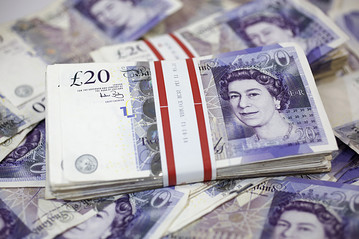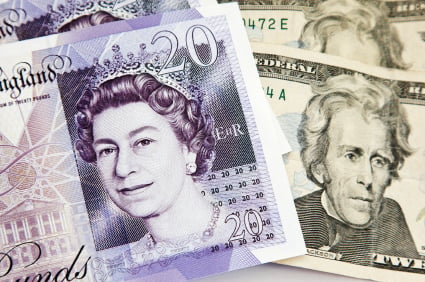It has been an impressive rally and arguably driven by continual USD weakness providing upside momentum, but it finally appears that the GBPUSD bulls are losing steam. The Pound slipped by around 100 pips against the Dollar yesterday and while some might be right to suggest this could be another consolidation before the next leg higher, it is more likely a signal that the GBPUSD is beginning to erase some of the unexpected 600 pip gains over the past fortnight. As mentioned before, the weak sentiment towards the USD has been providing direction for the Pound and the GBPUSD would be vulnerable to downside pressures when trader appetite towards the USD returns.
The bottom line is that while there are very few who are questioning that the UK economic outlook is not attractive, we are still at least a year away from a UK interest rate rise and this will continually limit how high the Pound can extend against the Dollar at the very least. There is also a valid argument to suggest that the USD is currently oversold, especially considering that the Federal Reserve will be raising US interest rates over the next couple of months. I expect the Federal Reserve to raise rates in September, like I have done for nearly the past year and this would pressure the Pound. This also means that any GBPUSD upside moves beyond 1.60 would be ambitious unless UK interest rate expectations are pushed forward and if it were to occur, it would more likely be motivated at this stage by widespread USD weakness.
Global markets rallied on the increased prospects of a deal between Greece and its creditors being reached. The improved market sentiment stretched globally with NASDAQ closing at a record level, and both the German DAX and FTSE 100 surging to the upside. If recent history is anything to go by, there is likely to be a few more twists and turns before a deal is concluded but this is at least a positive sign. The strong gains in global markets just shows how much investors want a deal to be reached and everyone would much prefer it to be this way, rather than for the uncertainty over a looming default. One of my greatest concerns over this ongoing situation is that the markets have not priced a default in the slightest and the potential global implications of such an event remain largely unclear. This is a risk all investors would want to avoid.
The Euro managed to rebound against the Dollar on optimism that progress on a Greek deal is finally being made with a variety of reports emerging that Greece submitted new proposals to Eurogroup officials. This pushed the EURUSD marginally above 1.14 but as we have seen repeatedly over the past couple of weeks, there are traders out there that see this as a sell-on rally opportunity and the pair wasted little time in once again pulling back quickly to 1.1320. Until the Euro managed to surpass what many see as super strong resistance against the USD at 1.1450, gains for this pair appear capped. If you are a purchaser of the Euro, the chances of gains in the short-term against the Pound are more likely than against the USD.
Advertisement
Despite the continual mixed sentiment towards the USD, the NZDUSD is continuing to fall with this stating a great deal about the weak attraction towards the NZD following the unexpected interest rate cut from the Reserve Bank of New Zealand (RBNZ) just over a week ago. After the initial interest rate cut from the RBNZ, economic performances from the New Zealand economy are suggesting that the pressure will remain on the RBNZ to continue cutting rates. This is quite a contrast to the spectacular rally the currency encountered this time last year, but the economic sentiment has changed and investors are pricing in further declines. The NZDUSD has now sunk below the psychological 0.69 support level, which is likely going to lead to a further downside move towards 0.66 at some point in the future.
Although WTI has managed to advance back above $60, the lack of gains for this commodity despite the weak sentiment towards the USD just demonstrates that there are limited buyers in the market for WTI. This is no major surprise considering OPEC left production levels unchanged just over a fortnight ago and you would expect there to be hesitation from investors to enter new positons as a result of the outcome. While reduced trade surpluses from the United States are becoming a regular fixture of the weekly inventory reports, it is clear investment in oil production from OPEC members is increasing and this will offset reduced inventory from elsewhere.
Concerns over there being an oversupply in the market has been a dominant theme when it comes to discussing oil for a year now and it will not be changing anytime soon, which will also continue to weigh on investor sentiment. OPEC supply is now at its highest level since August 2012 and with the total rig counts in the United States declining at their slowest rate since December at the end of last week, the markets are receiving further confirmation that low oil prices are set to stay.
Advertisement
Follow Jameel on Twitter @Jameel_FXTM
For more information please visit: Forex Time







